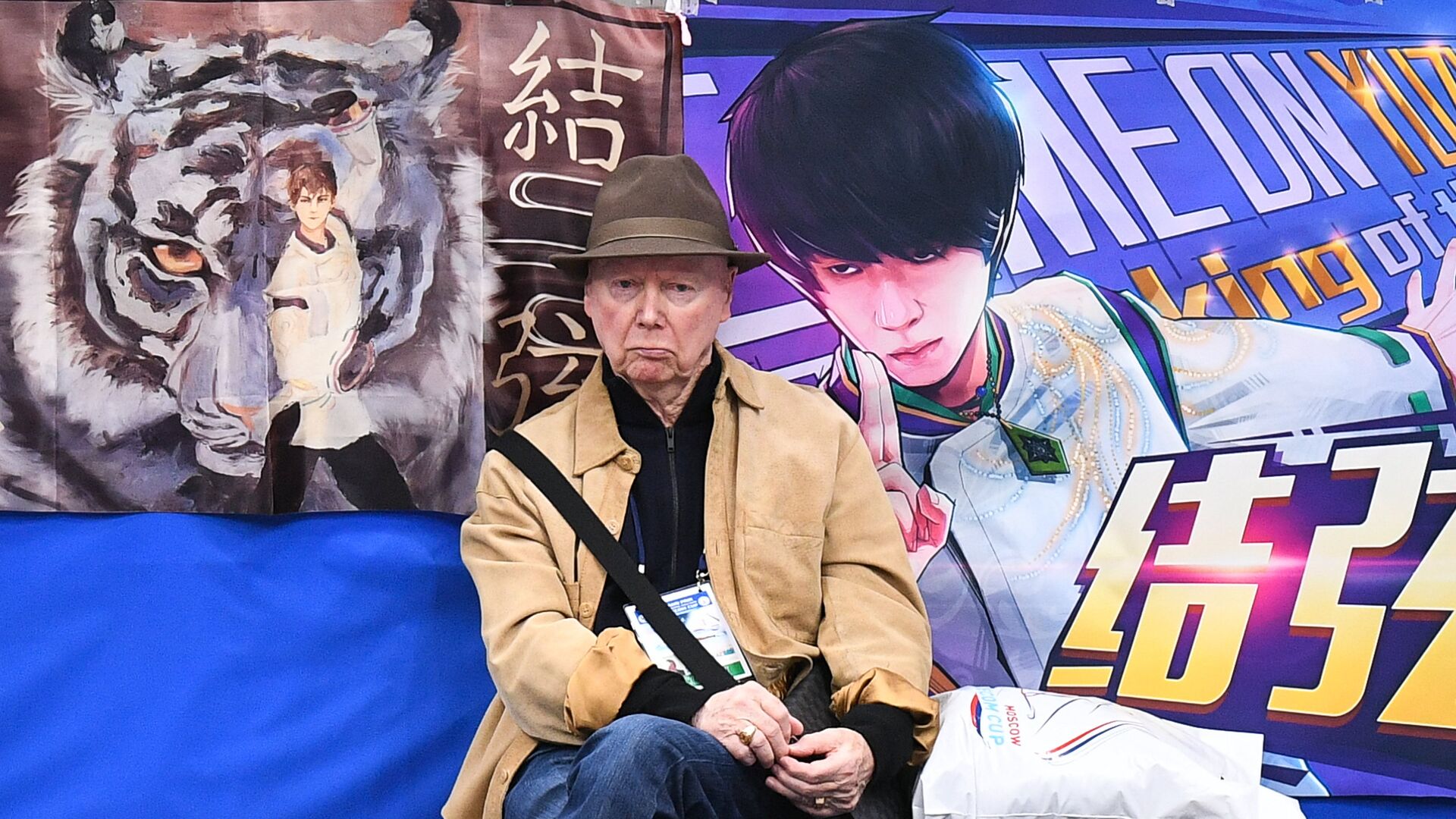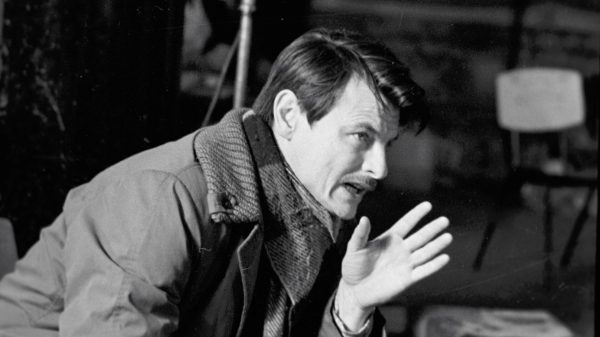
br>
On Sunday it became known that the American figure skating coach died at the age of 86 Frank Carroll. For many years, his students competed with Russian athletes at the world's largest tournaments. Sports correspondent is about a man whose student left Evgeni Plushenko without Olympic gold in Vancouver.
Fate saved him from death
Frank Carroll has lived a long life in figure skating. Which could have been very short if not for a coincidence. In 1960, Carroll decided at the age of 22 to end his amateur career and go professional. And in February 1961, the entire US team, flying to the World Cup in Czechoslovakia, crashed in a plane crash in Brussels. Carroll was already performing in the show at this time.
However, after three years, the skater gradually switched to coaching. This was partly caused by the same tragedy in the capital of Belgium — American figure skating was left not only without athletes, but also without coaches. For this reason, the future famous specialists Carlo Fassi and John Nix moved to the USA at that time to train, the first from Italy, the second from Great Britain. Carroll also joined the revival of figure skating in America, although before that he had even been an actor.
Carroll's first significant successes in the coaching field came to him quite quickly. Linda Fratianni — this figure skater is probably remembered by our young rising star at that time, and now the honored coach of Russia Elena Vodorezova. The American athlete, who trained with Carroll, shone in the same years, and also in her teens: at the age of 16, she became the winner of the 1977 World Championship, and in 1979 she repeated this success. In 1980, in Lake Placid, Carroll led Fratianni to silver at the Olympic Games.
The Story of Kwan and Lysacek
However, this figure skater is hardly one of those who can be considered a symbol of the entire sport. But another famous American woman certainly qualifies for such a definition. We are, of course, talking about Michelle Kwan. She joined Carroll’s group at the age of 10, and at 13 she was already in the top six at the adult national championship. Experts noted that this artistic figure skater had mature skating beyond her years with complex choreography, which, of course, was the merit of her coach. Carroll did not limit the student’s choice of musical accompaniment and program topics, stating: “The judges want to see a world champion among women, not among girls.”
Kwan, under Carroll, won five world championships between 1996 and 2003, becoming the main rival for Russian figure skaters Maria Butyrskaya and Irina Slutskaya. They beat both Americans at the world championships — Butyrskaya in 1999, and Slutskaya in 2002 and 2005. However, at the last world championship, held in Moscow, Kwan already competed without her permanent coach. In 2001, the paths of Carroll and his student diverged: in an attempt to win Olympic gold, Michelle decided to change the situation, but, like Slutskaya, she was unable to win the main medal in her career.
But another of Carroll’s students, Evan Lysacek, succeeded. Unlike Kwan, this skater came to Carroll not as a child, but as a fully developed athlete — at the age of 18. And with the foundation that the Russian coaching school laid in Evan: before moving to Frank, Lysacek was taught the skill by Viktor Nikolaevich Kudryavtsev, the mentor of the first Soviet world champion Sergei Volkov, who trained the Olympic champion Ilya Kulik.
Before Lysacek, Carroll already had success in men's singles skating. He led Christopher Bowman to world championship medals in the late 1980s and trained Timothy Gable, one of the first skaters to rely on the maximum number of quadruple jumps possible at that time. The first quadruple salchow in history in competitions, the first program with three jumps in four rotations — these merits belong to Gable, and it was this skater who bore the title “king of quads” in the late 1990s and early 2000s, now rightfully belonging to an American of Russian origin Ilya Malinin. But Gable did not reach the gold of the Olympic Games and World Championships — the second mark was very lame. And in terms of the totality of technical and artistic skill, Carroll’s student was regularly inferior to Alexei Yagudin and Evgeni Plushenko.
With Lysacek, Carroll chose a completely different strategy. This skater came to his group exactly at the time when a new judging system was introduced in figure skating — which is still in effect today. Many coaches of the old school were never able to adapt to it and gradually left the scene. But not Carroll. He set a clear course to maximize the benefits of the new system, in which each element is assessed separately, and bonuses are awarded for the quality of execution. And since Lysacek did not consistently master quads, he and his coach began to place emphasis in their programs on the ideal execution of triple jumps, spins and step sequences in order to receive the largest bonuses.
< br>
This path led Evan to gold at the 2010 Olympic Games in Vancouver. Many were indignant then: how is this possible, an Olympic champion — and without a quadruple? Among the dissatisfied, of course, was Evgeni Plushenko, who remained second, who believed that he had won. A photograph has gone down in history where a Russian figure skater, climbing to the second step of the podium, defiantly jumps over the highest. Plushenko's coach Alexei Mishin then called the judges' decision to give gold to Lysacek a crime, and the referees themselves as one-eyed cyclops who set figure skating back 20 years.
br>Heritage
But emotions remained in the past, and Carroll went down in history, at the age of 71 he won the first Olympic gold with his student. “I thought this might never happen,” Carroll said then. “For my career, Evan’s gold is like decoration on the cake. There are many talented coaches in the world, much more talented than me. But I am grateful to God for sending me talented students. And I didn’t look for them — they somehow came to me on their own.” The American coach explained the decision of the referees to choose Lysacek Plushenko as follows: “Each of them had both strengths and weaknesses. The referees just added up the points and found out who had more.”
In general, Carroll assessed his role in raising champions rather modestly, as evidenced by his other words. “When people say that I made Michelle Kwan the most beautiful figure skater and world champion, and Evan Lysacek an Olympic champion, I say that’s not true. They did it all themselves. They had the will, they had the passion, they had the skill. I only guided them and provided moral support. And in moments of the highest level of stress for my students, I tried to be as calm as possible in order to instill confidence in them.»
After winning his main award, Carroll continued to work, despite his advanced age. Already at the end of his coaching career, he helped several more talented athletes achieve success at the world level. Kazakh figure skater Denis Ten, who unfortunately tragically passed away in the prime of his sports career, Carroll led to two world championship medals and bronze in the individual competitions at the Olympic Games in Sochi. Under his leadership, American Gracie Gold became a bronze medalist at the 2014 Games in the team tournament.
In the summer of 2018, Carroll announced his retirement from coaching. But he did not leave figure skating — he continued to advise colleagues and their athletes. After all, the main merit of this specialist is that he knew his sport so deeply that he knew how to bring success to his students both in the years when figure skating contained compulsory exercises (the so-called school), and under the current system of points. This is precisely the true greatness of Carroll, and the awards won by his students are already a consequence.






















































Свежие комментарии